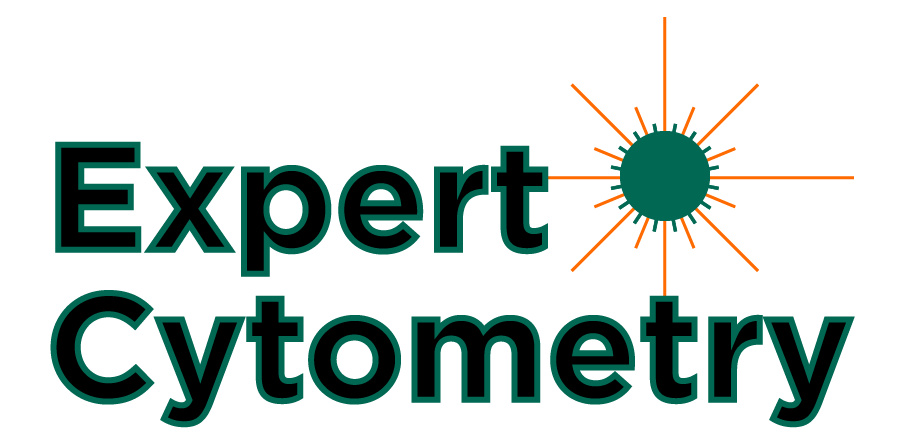Flow Cytometry Protocols To Prevent Sample Clumping

Good flow cytometry depends on a high-quality, single cell suspension. If the cells put through the instrument are not of high quality, the ensuing data will be difficult to analyze.
Likewise, if the sample is clumpy, one will not be able to readily distinguish cells of interest from the clumps they are attached to. Thus, sample preparation becomes the critical first step in any flow cytometry experiment.
As Henry Ford once said, “Before everything else, getting ready is the secret of success.”
For the purposes of this article, our attention will be focused on mammalian cells and cell-lines. While other samples can benefit from these tips, samples from the environment, bacterial and yeast samples, and small particles like extracellular vesicles, have their own issues and tricks to consider.

To get high-quality results, follow these 3 sample preparation steps…
1. Get the purest sample possible.
Taking the example of working with peripheral blood, one of the first and most important choices to be made when using peripheral blood is the type of collection tube that will be used.
Since most of the tubes used for human blood have some form of anticoagulant in them, the choice of tube also dictates the anticoagulant. You can choose EDTA or heparin as the anticoagulant, although each researcher may have a personal choice for anticoagulant based on downstream applications.
In this example, the sample contains red blood cells. If you study RBCs, this is great. If not, the next step is some removal process.
The easiest method is to use some form of lysis solution — for example — ACK buffer. This lyses cells based on osmotic differences between RBCs and leukocytes.
While you can buy this solution from many vendors, there are a lot of recipes on the Internet. Here is one ACK recipe to try…

The protocol to use this is to add 1 ml of 1X ACK buffer and suspend the cells well. Wait 5 minutes and add 10 mls of Flow staining buffer (FSB: 1xPBS with 0.1% BSA), invert a few times and centrifuge.
This is especially good if working with other RBC containing samples like bone marrow or spleen. The timing of the protocol is critical, as is testing the reagent vigorously to ensure it is not lysing your cells of interest.

Figure 1: CPT tube separation demonstrating the different layers.
Where Ficoll may have been popular in the past, there is movement to favor having samples collected into the BD CPT tubes. These are great tubes to use because they combine a density gradient with a special gel.
When the tubes are centrifuged, a density separation of the cells occurs, and the gel barrier separates the RBCs and neutrophils from the Lymphocytes and Monocytes — making removal very easy.
Boyd et al (2015), in a paper, discusses different ways to improve detection of Salmonella in blood, and shows a great picture in figure 2 that illustrates the results of different lysis/isolation methods.
2. Count your cells correctly.
Once the single cell suspension is prepared, it is time for the dreaded counting of the cells. This is an essential step, as the recovery may make or break the experiment. It is also good to count the cells before staining and after staining to see what losses have occurred. If you’re not careful, you can see losses of up to 30% per centrifugation step.
These counts are critical to make sure that there are enough cells for the downstream applications. This is especially true if the experiment is sorting, and a specific minimum number of cells is needed.
Three methods for counting cells include:
- manual (using a hemacytometer — the ‘gold standard’),
- image-based (instrument names), or
- flow-based (counting beads or pump-based system).
Each method has its strengths and weaknesses, so should be fully qualified and consistently applied. Consider using both image-based (using the Countess) and flow-based (Accuri).
As with every method, one must qualify the assay, typically using either a hemacytometer or other counting standard. If the system is kept in good condition, results like these, provided by Claire Rodgers (when she was at Accuri), are possible with Accuri.

Figure 2: Cell counting comparison using counting beads and the Accuri C6.
One other important advantage of using a cytometry-based method is that dead cell enumeration is easier with a cell-impermeant dye (PI, for example) rather than relying on Trypan Blue.

Figure 3: Structure of Trypan Blue
While this dye has been used for many years, the issue becomes determining how ‘blue’ is a dead cell. Of course, having RBCs in the mix can also be an issue, as shown below.

Figure 4: PMBCs stained with Trypan Blue with (left) or without (right) red blood cell ACK lysis.
3. Prevent your cells from clumping.
The final step in having high quality single preparation is to take steps to ensure the cells don’t clump. There are several common causes of this and even easier fixes.
- Dead cells — Dead cells can release DNA into the medium. DNA is the duct-tape of the biological world and will easily cause clumping by binding cells together. The easiest solution for this problem, and one recommended especially for cell sorting, is to add 10 units of DNAase per ml of sample to minimize this effect.
- Cations — Calcium and Magnesum can promote cell clumping. When at all possible, use Ca++ and Mg++ free PBS for your staining buffer, and consider adding 1 mM EDTA to your buffers as well. Not only will this help reduce clumping, if you’re going to be fixing cells stained with QDots, it may be essential, as Zarkowsky et al., showed in 2011.
- Over pelleted cells — If cells are pelleted too hard, they can clump. Make sure to know the relative centrifugal force of each centrifuge the samples are prepared on and to use that as a guide for setting the speed of the centrifuge. Remember different rotors will have different RCF.
- Clumped cell removal — At the end of the day, if there are clumps of cells in the sample, they need to be removed. Filtration is the fastest and easiest way to do that. Mesh strainers are available from several vendors, but can be very pricy. You can consider ordering in bulk from a company called ‘Small Parts’ on Amazon where you can get mesh like this 50 micron sheet for a reasonable price. Cut it up into convenient sizes and filter as needed. Prewet the mesh and put the pipet tip close to the filter to ensure the sample went through.
In the end, keeping these three steps in mind will improve the final outcome of the experiment — by ensuring that the cells are in a single cell suspension, and clumps don’t clog the instrument. Remember Howard Shapiro’s 1st Law of Flow Cytometry (from Practical Flow Cytometry, 4th Edition, page 11)…

In the end, good flow cytometry depends on a high quality, single cell suspension. If the cells put through the instrument are not of high quality, the ensuing data will be difficult to analyze. Likewise, if the sample is clumpy, one will not be able to readily distinguish cells of interest from the clumps they are attached to. Sample preparation becomes the critical first step in any flow cytometry experiment.
To learn more about flow cytometry protocols and to get access to all of our advanced materials including 20 training videos, presentations, workbooks, and private group membership, get on the Flow Cytometry Mastery Class wait list.

ABOUT TIM BUSHNELL, PHD
Tim Bushnell holds a PhD in Biology from the Rensselaer Polytechnic Institute. He is a co-founder of—and didactic mind behind—ExCyte, the world’s leading flow cytometry training company, which organization boasts a veritable library of in-the-lab resources on sequencing, microscopy, and related topics in the life sciences.
More Written by Tim Bushnell, PhD












